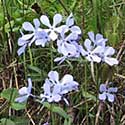The First Hummingbird
of Spring
I don't want to disappoint the first hummingbird, after his enormous journey. I'll have my feeders out early, ready for the very first one to arrive.
 In my back yard are several hooks for hummingbird feeders. They're empty at the moment, a Midwestern winter being no time and place for hummingbirds. I'll fill and hang the feeders during the third week of April, just before the earliest ruby-throated hummingbirds arrive in Iowa. The first one I see will be a male, since the males migrate about ten days ahead of the females. In my back yard are several hooks for hummingbird feeders. They're empty at the moment, a Midwestern winter being no time and place for hummingbirds. I'll fill and hang the feeders during the third week of April, just before the earliest ruby-throated hummingbirds arrive in Iowa. The first one I see will be a male, since the males migrate about ten days ahead of the females.
Today it's still winter, and I'm looking out under the fringe of icicles that drapes my eaves. But I'm seeing far south, to a warm land somewhere in Central America. That's where my first hummingbird of spring is now, perhaps in Belize or Costa Rica, or as far south as Panama. He left my backyard last fall, and he's coming back.
The annual cycle
Most small birds, including ruby-throated hummingbirds, migrate at night. We're not sure why. Perhaps to take advantage of the cooler, calmer air of night, or to avoid the hawks who are hunting by day, or to use the stars for navigation. As migration time nears, daily rhythms change. Birds who migrate at night but are normally active by day don't sleep through the night any more. My first hummingbird of spring is awake a lot at night. He's getting restless.
And he's starting to feel hungry — hungrier than he's been all winter. He needs to put on fat. He weighs only 2.5 grams, the same as a penny, but now he begins to gorge himself. He eats his weight in food every day. He plucks gnats out of the air with his bill. He gobbles insect eggs and snatches spiders from their webs. He guzzles the nectar of flowers. Even though he may double his weight, at his most massive the hummingbird will still weigh only 5 grams — as much as a nickel.
Something within is pulling him northward. We used to think it was lengthening days that urged him to migrate. However, scientists have studied birds by keeping them under constant lighting conditions. Even when they can't detect the day length, the birds go right ahead with their metabolic preparation for migration. It is birds' internal yearly clocks, or circannual rhythms, that are in control.
He leaves the area where's he's spent the winter. He finds his way into the Yucatan Peninsula, which juts like a hitchhiker's thumb into the Gulf of Mexico. By early March, he's reached the Gulf Coast.
Call of the North
Every day the northward pull is stronger, but if weather conditions are unfavorable, or the wind is against him, he may delay his departure. He may wait for a tail wind to increase his speed.
 And one evening in early March, as the sky is turning dusky, this creature weighing no more than a nickel rises into the air and launches himself out over the water. Northward he flies as darkness comes on, and all night he flies over the waters of the Gulf. And one evening in early March, as the sky is turning dusky, this creature weighing no more than a nickel rises into the air and launches himself out over the water. Northward he flies as darkness comes on, and all night he flies over the waters of the Gulf.
Science is only beginning to guess how he keeps his direction. The earth's magnetic field is probably his compass. We think the stars help show him the way. The wind may whisper clues to the tiny speck of life alone above the sea.
Hour after dark hour he flies, spending the fat he stored up for the journey. When the sun comes up over his right shoulder, the hummingbird is somewhere in the middle of the Gulf. He cannot see land in any direction.
If he were migrating over land, he would stop, feed, and rest, but he has no choice other than to continue. If a wind comes out the north, it will slow him down, subtract its velocity from his progress toward land, and probably kill him.
Advancing with the spring
If good weather holds and the hummingbird's fat stores are sufficient, he will reach the Gulf Coast sometime in late afternoon. He will have flown for 18 to 22 hours, crossed 500 miles without food or rest. He'll have used up all his fat in that effort, and he will be starting to consume his own muscles.
 But the ruby-throat's journey is not over. After feeding and resting, he follows the spring north, as flowers bloom and insects waken from their winter slumbers. But the ruby-throat's journey is not over. After feeding and resting, he follows the spring north, as flowers bloom and insects waken from their winter slumbers.
One day toward the end of April I'll hear the whirring of wings outside my window, and I'll see my first hummingbird of spring. If I'm late and haven't put up the feeders yet, he'll hover in exactly the place the sugar solution hung last year, proving that he has been here before and that he remembers my backyard.
 But I don't want to disappoint him, after his enormous journey. I'll have those feeders out early, ready for the very first hummingbird to arrive. And as I hang them, I'll reflect on how my backyard has grown so large it now reaches all the way to Central America. But I don't want to disappoint him, after his enormous journey. I'll have those feeders out early, ready for the very first hummingbird to arrive. And as I hang them, I'll reflect on how my backyard has grown so large it now reaches all the way to Central America.
-- Diane Cooledge Porter
A slightly different version of this article appeared as Diane Porter's regular column, "Backyard Notes," in the February, 2008, issue of The Backyard Bird Newsletter.
Copyright 2008 by Diane Porter.
Related articles:
Hummingbird feeders
Recipe for hummingbirds' nectar
4-second QuickTime hummingbird movie
Nesting material for hummers |



